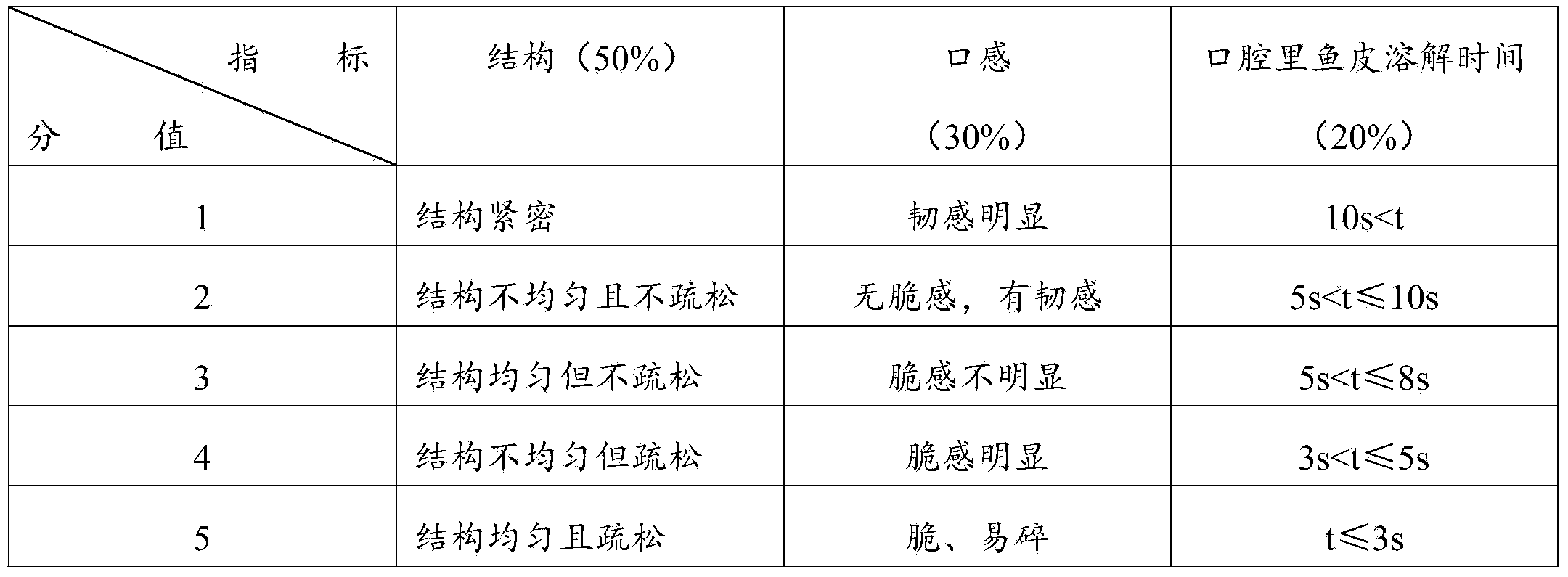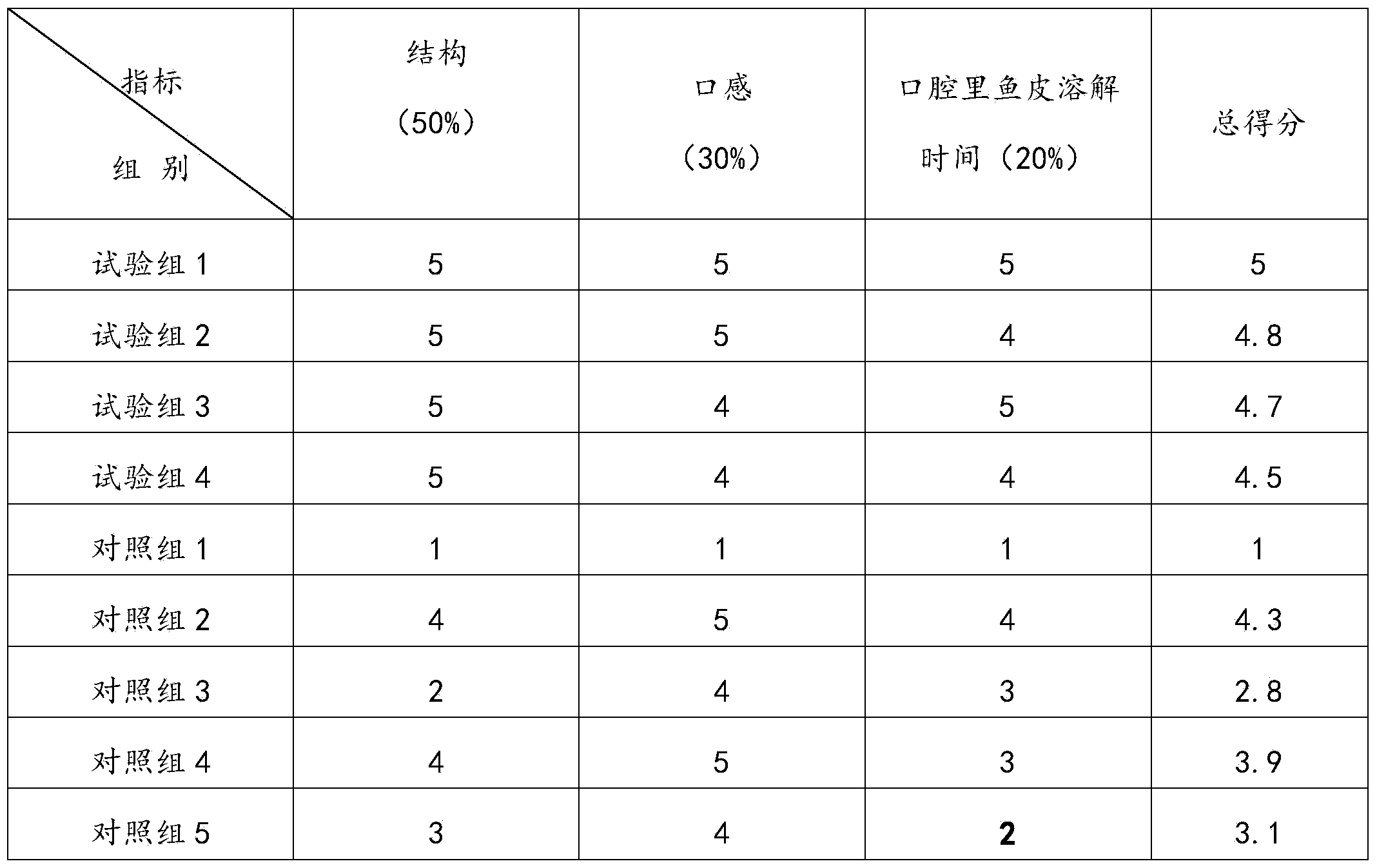Processing method for improving crispy mouth feel of fried fish skin
A processing method and fish skin technology, which is applied in the field of processing to improve the crispy taste of fried fish fillets, and achieves the effects of wide application prospects, low production cost, and reduced intake
- Summary
- Abstract
- Description
- Claims
- Application Information
AI Technical Summary
Problems solved by technology
Method used
Image
Examples
Embodiment 1
[0032] The treatment method for improving the crispy taste of fried fish skin in this embodiment uses tilapia fish skin as a raw material, and its preparation process includes enzymatic hydrolysis, air-drying, and frying. The specific steps are as follows:
[0033] a. Enzymolysis
[0034] Collect 1000g of tilapia fish skin, scrape off the fish scales on the fish skin and the remaining fish meat, and clean them 2 times. Wherein, descaling, scraping the meat, and cleaning can be processed according to the general methods in this field. After draining the water, place the Add 5000g of water and 10g of papain (activity: 100 U / mL) to the hole tray, stir well, put the fish skin in the water bath when the temperature reaches 55°C for enzymolysis, and the enzymolysis time is 30min;
[0035] b. air dry
[0036] After the enzymatic hydrolysis is complete, wash the fish skin with tap water once, and cut the fish skin in half for pickling; the pickling solution is: chili powder: 50g, cum...
Embodiment 2
[0040] The treatment method for improving the crispy taste of fried fish skin in this embodiment uses dace fish skin as a raw material, and its preparation process includes enzymatic hydrolysis, air-drying, and frying. The specific steps are as follows:
[0041] a. Enzymolysis
[0042] Collect 1000g of dace fish skin, scrape off the fish scales and residual fish meat on the fish skin, and wash them twice. Among them, the descaling, scraping, and cleaning can be done according to the general methods in this field. After draining the water, place holes Add 6000g of water and 10g of papain (the activity is 90U / mL) to the tray, stir well, put the fish skin into the water bath when the temperature reaches 55°C for enzymolysis, and the enzymolysis time is 20min;
[0043] Wash the fish skin, then add the same amount of water, add 5g of protease, stir well, put the fish skin in the water bath when the temperature reaches 55°C for the second enzymatic hydrolysis, and the enzymatic hydr...
Embodiment 3
[0049]The treatment method for improving the crispy taste of fried fish skin in this embodiment uses green bamboo fish skin as a raw material, and its preparation process includes enzymatic hydrolysis, air-drying, and frying. The specific steps are as follows:
[0050] a. Enzymolysis
[0051] Collect 1000g of green bamboo fish skin, scrape off the fish scales and residual fish meat on the fish skin, and wash them twice. Among them, the descaling, scraping, and cleaning can be done according to the general methods in this field. After draining the water, place holes Add 5000g of water and 13g of papain (with an activity of 70U / mL) to the tray, stir well, put the fish skin into the water bath when the temperature reaches 50°C for enzymolysis, and the enzymolysis time is 30min;
[0052] b. air dry
[0053] After the enzymatic hydrolysis is complete, wash the fish skin with tap water once, and cut the fish skin into 4 sections for pickling; the pickling liquid is: chili powder: 6...
PUM
| Property | Measurement | Unit |
|---|---|---|
| Vitality | aaaaa | aaaaa |
Abstract
Description
Claims
Application Information
 Login to view more
Login to view more - R&D Engineer
- R&D Manager
- IP Professional
- Industry Leading Data Capabilities
- Powerful AI technology
- Patent DNA Extraction
Browse by: Latest US Patents, China's latest patents, Technical Efficacy Thesaurus, Application Domain, Technology Topic.
© 2024 PatSnap. All rights reserved.Legal|Privacy policy|Modern Slavery Act Transparency Statement|Sitemap



